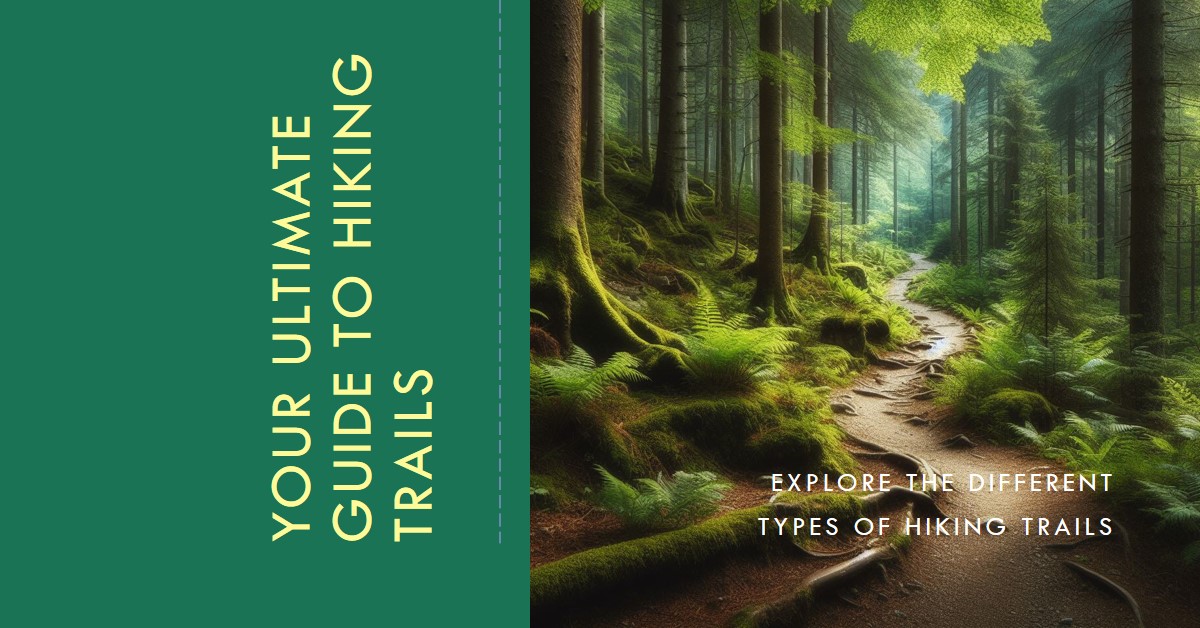Choosing women’s hiking shoes involves wrapping your head around features such as comfort, fit, durability, traction, and support. With these critical factors in mind, you’re sure to find the most suitable footwear for your hiking experiences.
Table of Contents
Why Opting For The Ideal Hiking Shoes Is Essential
Picking the right hiking shoes is paramount, as they can ensure balance and stability across diverse topography. They play a significant role in warding off injuries and discomfort during long hikes. A pair of supportive and well-fitting hiking shoes can elevate your hiking experience to new heights.
Key Considerations When Picking Women’s Hiking Shoes
Main Considerations When Choosing Women’s Hiking Shoes:
The fit and comfort of hiking shoes are critical factors when selecting a pair for women. It’s imperative that the shoes fit perfectly and offer comfort for extended treks. The perfect pair is snug, yet offers enough room for your toes to move. The durability and longevity of the hiking shoes are also important and depend on the quality of materials used in their construction. Shoes with a good grip are essential to ensure stability across various terrains, so look for options with lugged soles.
Alongside fit, comfort, and durability, consider aspects such as waterproofing and breathability. Waterproof hiking shoes ensure that your feet remain dry in damp conditions, whereas breathable shoes help in moisture management, thereby keeping your feet comfortable. Lastly, ensure the chosen shoes provide sufficient support and cushioning to prevent fatigue and injury during long trails.
How To Measure The Correct Size And Fit
To pick out the perfect women’s hiking shoes, it’s crucial that you measure your feet correctly. This will assure a comfortable fit while preventing blisters and discomfort during hikes. Measure both feet as there can be slight differences in size. Explore different brands and models to find the most comfortable fit. Make sure to check for appropriate arch and heel support to ensure stability and prevent injuries. Consider wearing hiking socks during the trials, as they can impact the fit. Keep in mind, a tight fit may result in discomfort, while shoes that are too loose can lead to blisters. Right sizing and fitting can enhance your hiking ventures and ensure your feet remain comfortable and safe while on the trails.
Distinguishing The Different Types Of Hiking Shoes
While selecting women’s hiking shoes, understanding the different, widely available types can aid your decision. These include trail runners, hiking sandals, day hiking shoes, backpacking boots, and mountaineering boots. Trail runners are designed for trail hiking and are lightweight while providing good traction and support. Hiking sandals are excellent for warm weather hikes and offer superior breathability. Day hiking shoes offer the perfect balance of comfort and durability and are suitable for shorter hikes. Backpacking boots are sturdy and ideal for multi-day hikes, providing intensive support and protection when carrying heavy loads. On the other hand, mountaineering boots are designed to tackle extreme terrains and offer in-depth support and durability.
Assessing Different Terrains And Deciding The Appropriate Shoe
| Terrain | Optimal Shoe |
|---|---|
| Gentle and easy trails | Robust hiking shoes offering excellent traction and support |
| Rugged and uneven terrains | Hiking boots providing ankle support and enduring soles |
| Soggy or muddy conditions | Waterproof hiking shoes or boots with an impressive tread pattern |
| Frosty or icy surroundings | Insulated hiking boots with hardy outsoles for additional grip |
Choosing the right women’s hiking shoes can largely be determined by the terrain you’ll be encountering. For flat and easy terrains, robust hiking shoes with excellent traction and support can enhance comfort levels during long journeys. Rugged and rocky routes demand hiking boots with enhanced ankle support and sturdy soles. For wet or muddy surroundings, waterproof hiking shoes or boots with substantial tread patterns are highly recommended. In case of frosty or icy terrains, insulated hiking boots with hardy outsoles are mandatory for added warmth and solid grip. It’s important to match the shoe to the specific demands of the terrain to assure a safe and enjoyable hike.
Evaluating Material And Construction
Leather vs Synthetic Uppers: You can choose between several materials when it comes to women’s hiking shoes. Leather and synthetic uppers are the most popular selections. Leather uppers offer durability, water resistance, and a natural feel. Conversely, synthetic uppers are lightweight, breathable, and typically more economical. It’s important to weigh your individual needs and preferences when making this choice, as both materials offer unique benefits.
Midsole and Outsole Materials: The midsole and outsole of hiking shoes play a pivotal role in comfort, support, and traction. Opt for hiking shoes with cushioned midsoles made of materials such as EVA or PU foam. For the outsole, look for options featuring rubber compounds to assure excellent grip on diverse terrains.
Stitching and Reinforcement: It’s important to take note of the stitching and reinforcement of the hiking shoes while ensuring selection. Quality stitching promises durability, while reinforced areas like the toe caps and heel counters offer additional protection and stability.
Gaiter Compatibility: If you plan on using gaiters to prevent debris from entering your shoes, it’s crucial to check if the hiking shoes are compatible with gaiters. Some shoes come equipped with built-in gaiter attachment points or other features allowing for easy attachment of gaiters.
Weighing The Advantages And Disadvantages Of Specific Shoe Features
As every feature of a hiking shoe comes with its own set of pros and cons, understanding these in detail helps you make an informed decision. Whether it’s the weight, flexibility, durability, or even the aesthetics of the shoes, ensure you’re aware of how each of these factors align with your specific needs. A careful evaluation will lead you to a pair of hiking shoes that perfectly harmonize with your hiking activities, ensuring a safer and more enjoyable journey.
The Verdict
Although the quest to find the perfect pair of women’s hiking shoes may seem daunting, once you know what to look for, the process gets much easier. Aspects such as the fit of the shoes, their comfort level, durability, the support they offer, and the type of terrain they are designed for, play pivotal roles in making the right choice. Remember, your hiking shoes should enhance your outdoor adventures, not take away from them. Choose wisely and your hiking trails will reward you with a series of unforgettable experiences.
Selecting the right hiking shoes for women might feel like a daunting process as it is influenced by numerous interconnected factors. However, it could be simplified by dwelling into certain key shoe components. The decision starts with selecting low-cut or high-cut shoes. For frequent trekkers who embark on day hikes or less challenging terrains, low-cut shoes offer agility due to their lighter and more flexible mechanism. However, hikers who envision prolonged journeys on tough landscapes may find high-cut shoes more suitable for their enhanced ankle support and protection they provide.
Moving forward in this journey, the midsole technology plays an integral role, as different brands offer a variety of technologies such as EVA or polyurethane, each equipped with its own strengths in relation to cushioning and support. The key lies in trial and evaluation, testing out different shoes to determine the technology that suits your feet and hiking style the best.
The lacing system is another pivotal aspect in the making of reliable hiking shoes. Traditional laces provide a tailored fit, albeit with the risk of coming undone easily. If convenience is a priority, shoes with speed lacing systems or quick-pull laces ensure a secure fit along with handiness.
Finally, but importantly, toe protection is an aspect not to be disregarded. Many hiking shoes are armed with a rubber toe cap or a reinforced toe box to protect your feet from trail obstacles like sharp rocks. An analysis of these elements will guide you to the perfect women’s hiking shoes, underpinning comfort, support, and protection in your adventures.
Personal Preferences and Hiking Style in the Spotlight
The choice of women’s hiking shoes should centralize personal preferences and your unique hiking style. Selecting between lightweight and sturdy shoes can make an enormous difference in your hiking experience. The lightweight ones grant flexibility and free movement, making them ideal for those preferring a more agile hiking experience. In contrast, sturdy shoes provide additional ankle support along with stability, beneficial for those venturing on rugged terrains or carrying heavy loads.
Remember to consider ventilation and moisture management in your shoe selection, as hiking can induce physical strain and foot sweating. Shoes with excellent ventilation and moisture-wicking features can help preserve your feet dry and comforted throughout the hike. Additionally, a factor often overlooked is color and design options, which, albeit being primarily an aesthetic choice, can uplift your hiking experience by aligning with your personal style and preferences.
Working Around a Budget for Women’s Hiking Shoes
Defining a reasonable budget for your pair of hiking shoes is a substantial step towards making the right choice. Striving for a balance between cost and performance calls for thoughtful allocation of resources, ensuring value for money. Be it the frequency of your hikes or your specific hiking needs, each factor should be contemplated to decide upon the budget. Discipline in reviewing feedback and comparing prices across different brands will guide you to the best deals without a quality compromise. Thus, a goal-oriented budget and consideration towards indispensable elements can ensure a confident shoe selection within your financial capabilities.
| Attributes | Considerations |
|---|---|
| – Comfort | – Financial limitations |
| – Durability | – Hiking frequency |
| – Support | – Customer feedback |
| – Traction | – Comparison shopping |
Maintaining the Hiking Shoes for Long-Lasting Performance
Hiking shoes for women, like any essential equipment, require meticulous maintenance. Their longevity and trail performance is directly proportional to the upkeep effort. Simple shoe care tips like cleaning and storing after each use, maintaining the waterproof nature and breathability of the shoes, replacing worn-out soles and insoles, regular inspections for damage or wear can save you from unexpected shoe malfunctions during a hike. Armed with these maintenance tips, your hiking shoes would remain in top-notch condition, upturning your outdoor adventures.
Exploiting Expert Recommendations and Customer Reviews
It’s overwhelming to see the plethora of options when selecting the right women’s hiking shoes. Considering trusted brands and models that combine comfort, durability, and traction can be a game-changer in your outdoor treks. Online reviews and ratings are treasure troves of insights, granting you the experiences of other hikers without undergoing the trial phase. Look for reviews reflecting on crucial features like arch support, waterproofing, and grip. Equally beneficial is advice from seasoned hikers or professionals. Their experiences and knowledge about different models can guide
If you’re shopping for the perfect women’s hiking shoes, you’ll need to carefully evaluate the features of each pair. The question of opting for low-cut versus high-cut shoes often tops this analysis. The former, being relatively lightweight, offer flexibility and agility on the trail – characteristics ideal for less strenuous day hikes. However, for those planning longer expeditions or venturing onto tougher terrain, high-cut shoes, with their superior ankle support and protection, may be a better fit.
The midsole technology forms another critical part. With brands leveraging various technologies like EVA and polyurethane for cushioning and support, it is essential to try on different shoes to identify what works best for the shape of your feet and your hiking preferences.
How a shoe is laced can also significantly impact comfort and security. Traditional laces offer a customizable fit but might come undone during a trek. In contrast, options with speed lacing systems or quick-pull laces combine convenience with a secure fit.
Last but not least, toe protection is an essential feature not to be overlooked. Some hiking shoes integrate a rubber toe cap or a reinforced toe box. These additions protect your toes from any dangerous objects you may encounter on the trail. By meticulously considering the pros and cons of each feature, you can confidently select the ideal pair of women’s hiking shoes for your next adventure.
Bearing in Mind Personal Preferences and Hiking Style
While perusing women’s hiking shoes, your personal preferences and hiking style should take center stage. The complexity of this decision involves choosing between lightweight shoes, which offer flexibility and versatility, and sturdy shoes, that provide remarkable ankle support and stability. The former would suit someone yearning for an easily manageable, agile hike, while the latter may appeal to those open to taking up challenges or carrying substantial loads.
Hiking, by its nature, can push you physically, increasing sweat production in your feet. A pair equipped with good ventilation and moisture-wicking capabilities could be invaluable in keeping your feet dry and comfortable throughout the hike. While functionality is primary, picking a pair that suits your personal style can also contribute to an enjoyable hiking experience.
Navigating the Budget Landscape for Women’s Hiking Shoes
Pinning down a reasonable budget requires a mix of strategy and intent. Finding a sweet spot between price and performance is key, and it’s worth considering your hiking frequency and needs in this equation. Occasional hikers could suffice with a budget-friendly pair, whereas more regular hikers may be motivated to invest in superior-quality shoes for better durability and support. Take the time to validate your choice through reviews and price comparisons across brands, ensuring you get the best value without skimping on quality.
| Benefits | Considerations |
|---|---|
| – Comfort and durability | – Budget limits |
| – Support and traction | – Hiking frequency and user reviews |
Essential Tips for Maintaining Your Hiking Shoes
Your women’s hiking shoes are your faithful companions on the trail, and their maintenance is key to prolonging their life. Post-hike cleaning and proper storage, maintaining waterproofness and breathability of shoes, timely replacement of worn-out soles and insoles, and regular inspections for damage can preserve your shoes’ functionality.
Tapping into Expert Recommendations and Customer Reviews
Selecting the right women’s hiking shoes can be made effortless and enlightening by leveraging online reviews and consulting seasoned hikers or professionals. doing so creates an opportunity for firsthand insights, leading to an informed selection. Of course, remember that footwear is a personal choice – what fits well for one hiker may not for another, casting the importance of individual perspectives and experiences.
With a discerning eye on market brands and models and a clear understanding of your preferences and needs, you’re ready to lace up and get on track for your next hiking adventure.
Answering Frequently Asked Questions On Selecting Women’s Hiking Shoes
What Key Features Should I Look For In Women’s Hiking Shoes?
A successful hiking shoe search narrows down the considerations to comfort, durability, traction, and water-resistance. Ensuring the shoe fits comfortably, survives wear and tear, has a great grip, and is water-resistant while prioritizing specific needs, can lead to the selection of the ideal pair.
What Women-Specific Features Should Be Considered?
Yes, women-specific features such as arch support, suitable cushioning, and narrower fit cater to the unique nuances of women’s feet. Brands with such focused offerings can be a great starting point for your search.
How Should I Choose The Right Size Of Hiking Shoes?
Right sizing lies at the heart of shoe comfort. A well-measured foot length and width set a solid foundation to find the right shoe size. Trying them on for a walk eliminates any discomfort or blisters, tailoring a comfortable fit for your foot.
Wrapping Up
There you have it—a comprehensive guide to finding the perfect pair of women’s hiking shoes. From highlighting critical features and personal choices to clarifying common queries, we hope that this guide facilitates making a well-informed shoe choice. The right shoes make the journey enjoyable as they accompany you every step of the way, ensuring comfort, safety, and fulfillment. Cheers to many upcoming adventures!














